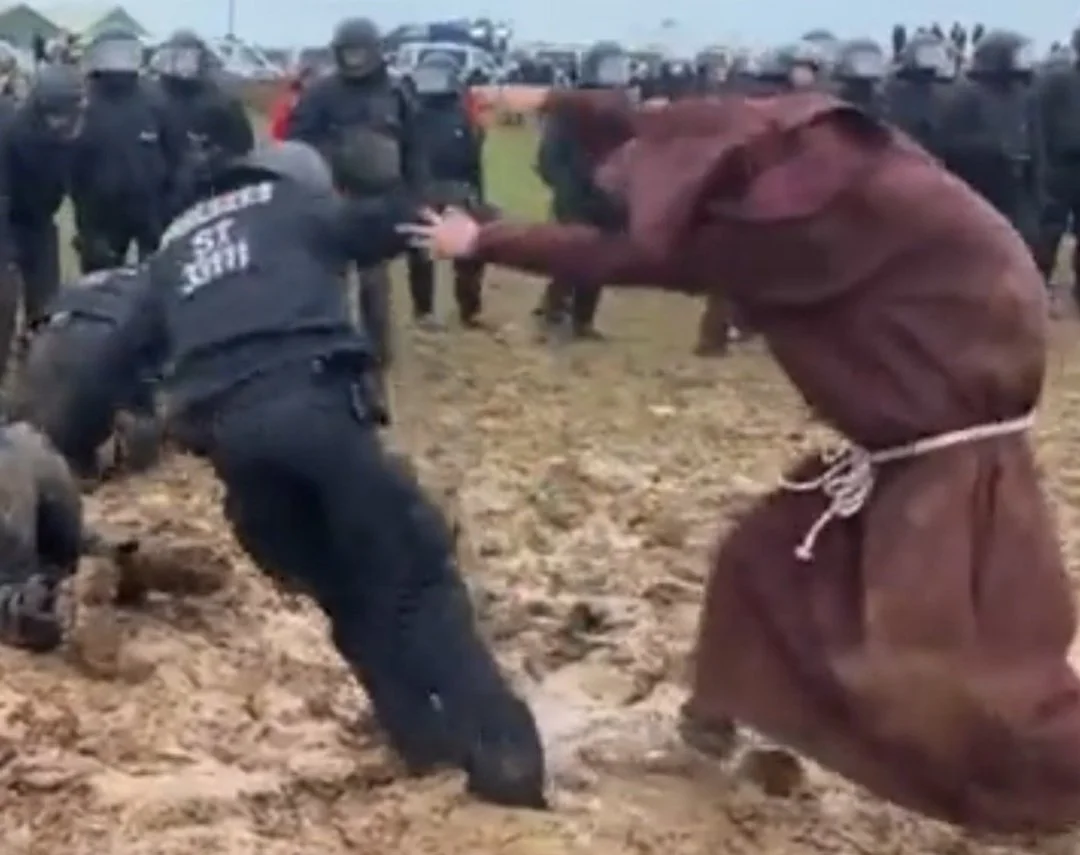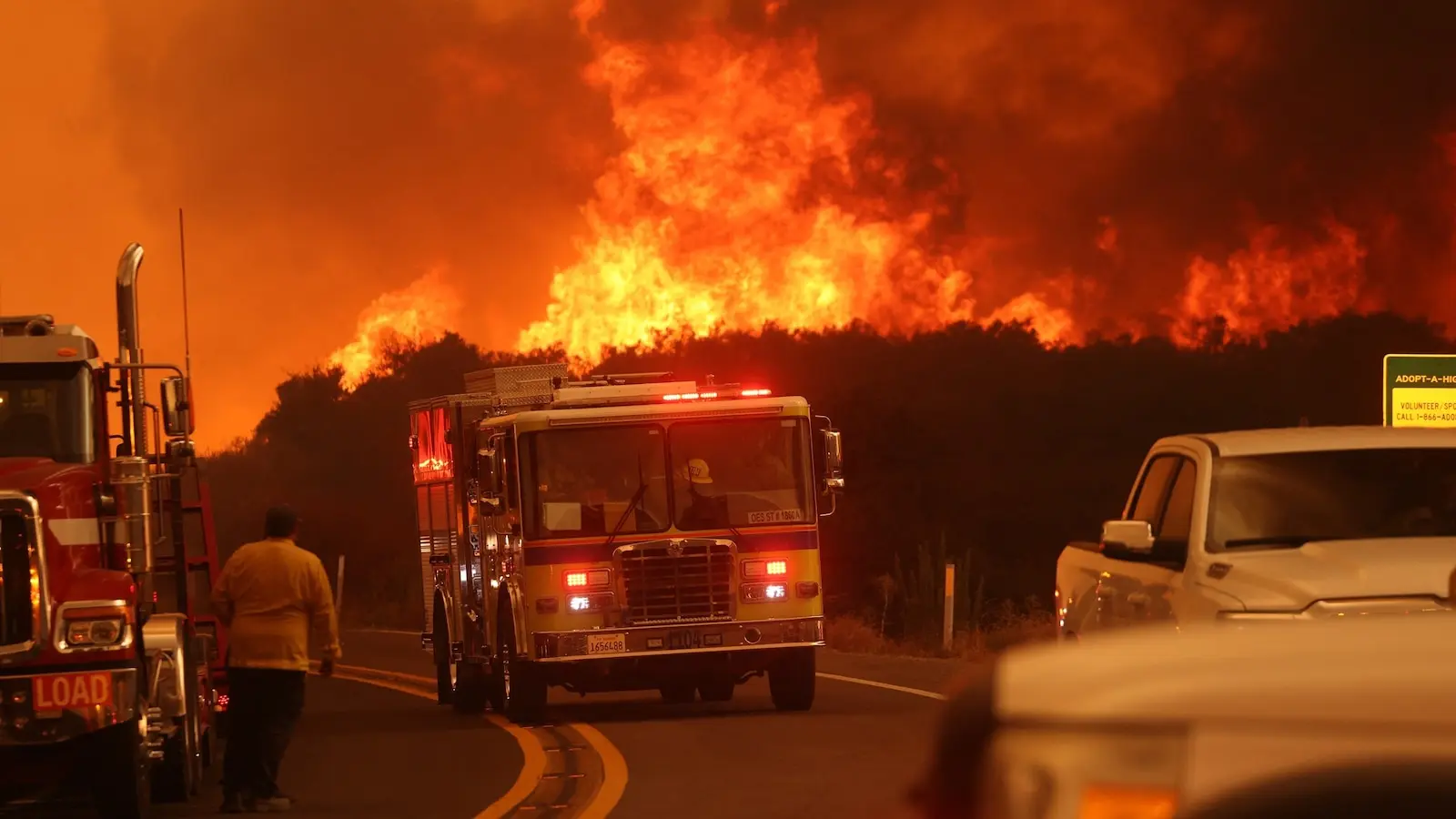Three rapidly growing Southern California wildfires have burned more than 100,000 acres in less than a week and continued to threaten homes in multiple communities as the state mobilized an all-hands-on-deck response to bolster front-line fire crews battling the raging flames.
Fueled by a punishing heat wave and fanned by gusting winds, the biggest blaze is the Bridge Fire, which ignited Sunday in the Angeles National Forest about 31 miles east of downtown Los Angeles and exploded overnight from about 4,000 acres on Tuesday to nearly 48,000 acres by Wednesday morning, according to the California Department of Forestry and Fire Protection.
The fire remained out of control with 0% containment after spreading across Los Angeles and San Bernardino counties. Authorities issued widespread evacuation orders as the fire tore through the towns of Wrightwood and Mt Baldy, destroying at least 33 homes, several cabins, and racing through a ski resort.
At least 33 homes in Wrightwood and Mt. Baldy have been destroyed and another 2,500 structures in the area are being threatened by the fire, according to Cal Fire.



What has California done to prevent this since the last wildfire?
Fire risk is only going to get worse going forward, so I’m wondering what steps have been implemented to change things.
This is every dumbass right wing talking point. Cali has the largest fleet of firefighting aircraft in the world. We have been deploying night time attack helicopters, we recently finalized like 5 new C-130 conversion craft (on top of our 747s, DC-10s and other various attack craft) that drop 4000 gallons of retardant and we have propositioned personnel across the state in strategic locations so they can water drop on any fire within 20 minutes. We’re a massive state with a ton of federal lands so cutting in the woods isn’t really a California thing. We’re burying power lines, but a lot of these fires recently have been dry lightening. We don’t really use watch towers since we have a system of cameras positioned on peaks all across the state that monitor for us. We have more firefighters and keep them on payroll year round. These fires down in SoCal happen frequently due to Santa Ana winds which is a dry (like 10% humidity), hot and fast wind that whips over the mountains. People in flat states or humid ones act like we just twiddle are thumbs at this but the state is just an environment that constantly caught on fire, and the weather and topography make those fires grow faster and burn hotter. Not to mention the eucalyptus that colonizers brought over that spontaneously combusts.
It’s a little ranty/ramble-y, but fire risk is something we’re use to here. It isn’t new to us.
I remember the first time I ever felt the Santa Ana winds (having lived near Irvine), that shit was sooo hot and dry, like literally nothing I’ve ever felt, even having been in Dubai during the summer.
Think riding a bicycle straight into a giant hair dryer in the desert at full blast. I ride a lot over long distances, but head on, the hot wind was powerful enough to make me stand out of my saddle consistently.
Wildly, wildly unpleasant.
It’s not meant to be a right wing talking point. It’s an honest question. (It’s not like I asked if they were going to rake the forest leaves like Donny dumbasss.)
This problem isn’t going away and I haven’t seen any progress in either the fires lessening in intensity or in the media reporting of California making any changes/updates. It just feels like we’re not making much progress.
I do appreciate the sincere list of changes you listed. I was surprised you mentioned that power lines were being buried because the last thing I read was that it’s just business as usual over at PG&E.
Dropping fire retardant sounds like a necessary evil I guess. I have no idea if the stuff they are using still contains pfas or something else we will regret later. I’d still like to see them cut fire lanes. It’s an older preventative, but it helps. I’m not a fan of controlled burns because they get out of hand too often and do more harm than good.
My grandpa worked as a watchman in a fire watchtower in a southern US forest. You never hear about that being a job anymore — that’s why I asked. I guess it makes a lot more sense these days to station cameras everywhere and monitor them remotely.
Thanks again for taking the time to reply.
Forrest service roads and cleared lanes don’t really do anything to help us mitigate our fires. A recent fire by me in NorCal was growing at a rate of nearly 1000 acres per hour. At that speed it was moving faster than 60mph and created its own weather including dry lightening and fire tornadoes. We have tons of freeways with at least 75+ feet of width to them for miles and they just jump those containment lines all the time.
Back burns/prescribed burns are about the only thing we have that does anything useful. In fact that earlier fire was talked about how it got out of control because a prescribed burn wasn’t done when it was scheduled and it was right in the starting path.
I’d recommend you go watch videos on the Camp fire (paradise) but also the Carr fire. The old thinking in Cali before that fire season was that cities were safe because of defensive spacing, pavement, underground power and access to water. The Carr fire wiped out a huge swath of western Redding and the Camp fire effectively removed paradise from the map. Both were 40k + people cities. Our fires aren’t like everywhere else. Our mountains create channels for wind to speed through and the steep inclines mean that flames spread faster when traveling up hills. Our trees are massive and when they fully engulf they basically become giant matches spewing embers for miles in every direction. In some cases we’ve had fires creating spot fires up to 1-2 miles away. We just can’t account for everything. Look at Nevada though, they consistently get larger fires than even California (due to remote locations and those same dry, hot winds. No one ever asks Nevada to sweep a forest or bury power lines.
We also resource share with Canada and Australia in California. So we have a few NSW water drop plane here for the summer helping us, and then in our winter we send a few of our DC-10s over and a 747. On top of that we’re also a state that sends its firefighters out even during our summer to go to Montana, Oregon, Washington, Nevada, Arizona and any other states that request our mutual aid.
Lastly, look up at Canada and Montana. Their wildfires are growing out of control. Specifically because they have a lot of dead trees after the bark beetle basically kills them.
There’s a great documentary on YouTube about the last watchman for the Forrest service. It’s just not needed much since our camera system uses multiple angles to geo-locate faster. With drones often sent and used to survey fires and help teams on the ground prepare to fight them.
Oh, and our smoke jumpers. We pay crews of people here in Cali to jump out of planes and live in the Forrest for weeks on end possibly while they fight fires. It’s just incredibly difficult in some of these more remote areas like the mountains.
Yes there are fire access roads.
I was hiking earlier this month and saw an area that had brush cut down and set up for rapid decomposition.